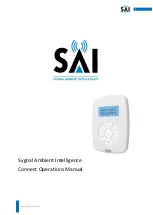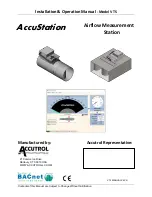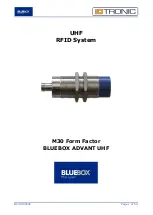
NI 9219 Calibration Procedure
14
ni.com
13. Compare the calculation result to the Upper Limit and Lower Limit values in Table 13.
14. Clear the acquisition.
15. Disconnect the resistor from the device.
16. Repeat steps 1 through 15 for all test points and channels on the NI 9219. NI recommends that you
verify the values for all the iterations listed in Table 13 for each channel, but you can save time by
verifying only the values and channels used in your application.
4-Wire Resistance Accuracy Verification
Complete the following steps to verify the 4-wire resistance accuracy of an NI 9219.
1.
Connect the NI 9219 to the resistor and the DMM as shown in Figure 7. Connect the sense leads
of the DMM as close as possible to the same point that the sense leads of the NI 9219 (HI and LO)
connect to the resistor to ensure that the DMM reference measurements include the same lead wire
resistance as the NI 9219 4-wire measurements.
Figure 7.
4-Wire Resistance Accuracy Verification Connections to the NI 9219
2.
Create an AI voltage channel in the 1 V range on the NI 9219.
3.
Commit the task to place the NI 9219 in voltage mode. This prevents the module from interfering
with the resistance measurement of the DMM.
4.
Configure the DMM for a 4-wire resistance measurement in the appropriate range according to the
test point from Table 15.
5.
Enable Auto Zero on the DMM.
6.
Acquire a resistance reading with the DMM. Record this measurement as
ref
.
7.
Disconnect the DMM from the resistor to ensure that the terminals on the DMM do not interfere
with the resistor while the NI 9219 makes measurements.
8.
Clear the task.
Table 13.
NI 9219 Verification Test Limits for Quarter-Bridge Accuracy
Mode
Range
Test Point
1–Year Limits
Min (
)
Max (
)
Location
Value
Lower Limit
(
)
Upper Limit
(
)
Quarter-Bridge
350
0
390
Max
309
±1%
–0.61
0.61
Min
4.99
±5%
–0.37
0.37
Quarter-Bridge
120
0
150
Max
121
±1%
–0.33
0.33
Min
4.99
±5%
–0.24
0.24
R
TestPoint
Ω
HI
LO
NI 9219
DMM
Ω
SENSE
HI
LO
EX+ (3)
HI (4)
EX– (5)
LO (6)
Ch
x














































